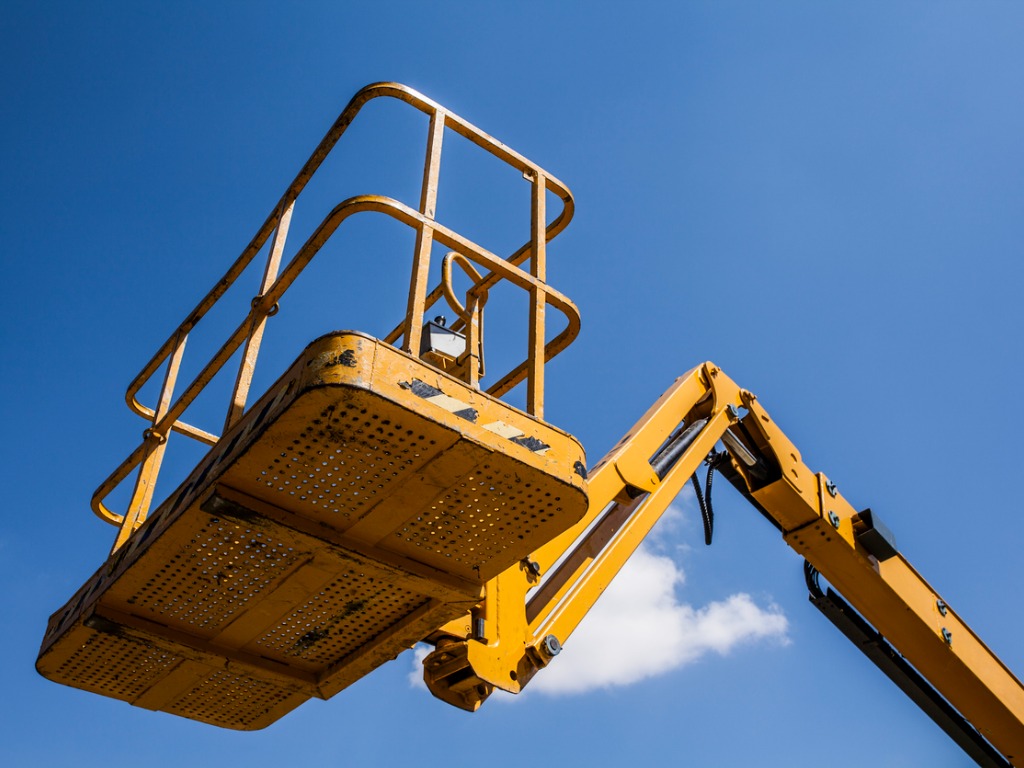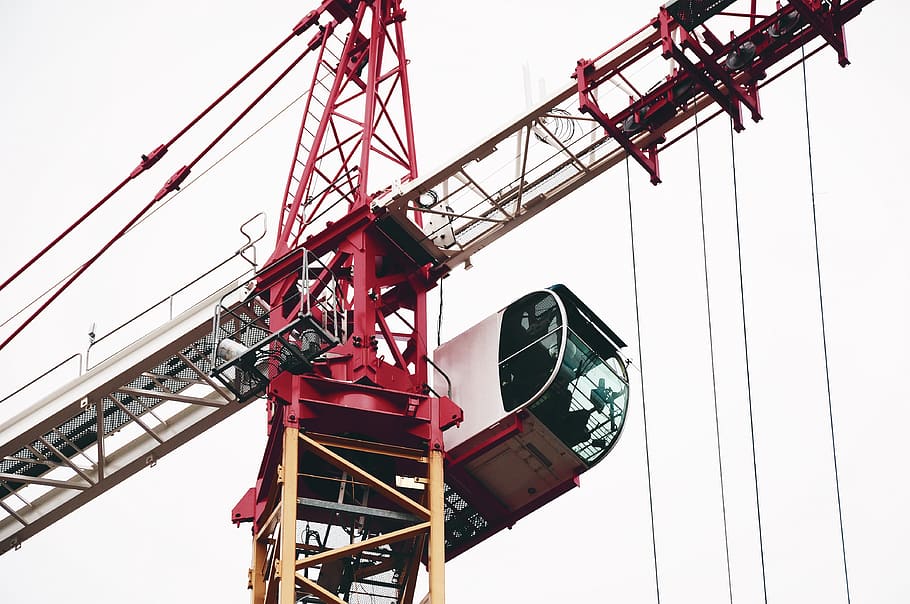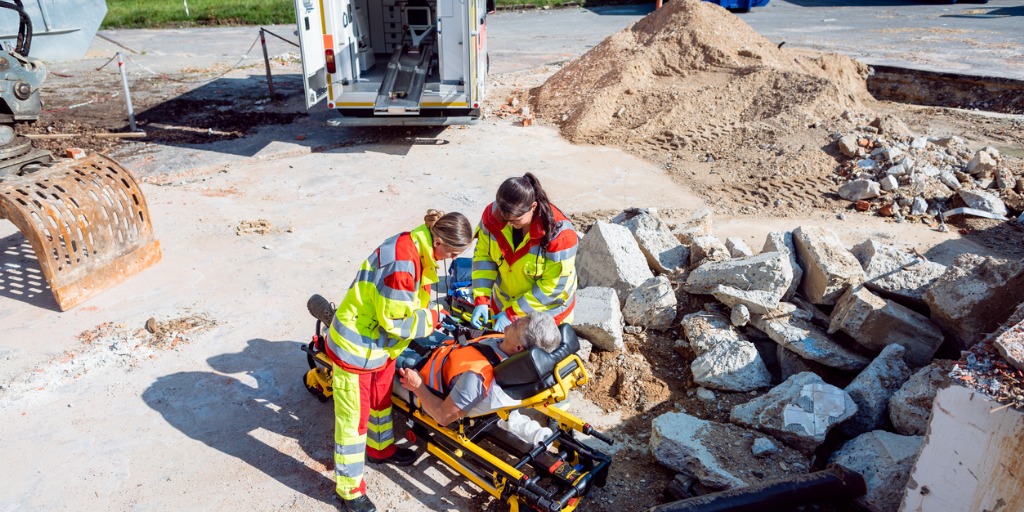Everything You Ever Wanted to Know About Aerial Lift Safety

This is Part 1 of a 3 Part series on Aerial Lift Safety.
General Requirements
Aerial devices and lifts (except firefighting equipment) must be designed and constructed in conformance with the American National Standard for “Vehicle-Mounted Elevating and Rotating Work Platforms,” ANSI A92.2.
Vehicle-mounted aerial devices used to elevate personnel to jobsites above ground include:
- Extendible boom platforms
- Aerial ladders
- Articulating boom platforms
- Vertical towers, and
- A combination of any of the above.
These items are considered aerial lifts whether or not they are capable of rotating about a substantially vertical axis.
Aerial equipment may be made of metal, wood, fiberglass reinforced plastic (FRP), or other material, and it may be powered or manually operated.
Aerial lifts may be “field modified” for uses other than those intended by the manufacturer, provided the modification has been certified in writing by the manufacturer or an equivalent entity to be in conformity with all applicable provisions of ANSI A92.2, and to be at least as safe as the equipment was before modification.
Specific OSHA Aerial Lift Regulations
29CFR1910.67(c)
Ladder Trucks and Tower Trucks. Before the truck is moved for highway travel, aerial ladders must be secured in the lower traveling position by the locking device above the truck ca, and the manually operated device at the base of the ladder, or by other equally effective means (such as cradles, which prevent rotation of the ladder, combined with positive acting linear actuators).
Electrical Tests: Electrical tests must be performed to assure compliance with ANSI A92.2, Section 5; however, equivalent DC voltage tests approved by the manufacturer may be used in lieu of the AC voltage test specified.
Bursting Safety Factor: All critical hydraulic and pneumatic components must comply with ANSI A92.2, Section 4.9. Critical components are those in which a failure would result in a free fall or free rotation of the boom. All non-critical components must retain a bursting safety factor of at least 2:1.
Welding Standards: All welding shall conform to the following Automotive Welding Society (AWS) Standards, as applicable:
- Standard Qualification Procedure, AWS B3.0
- Recommended Practices for Automotive Welding Design, AWS D8.4
- Standard Qualification of Welding
- Procedures and Welders for Piping and Tubing, AWS D10.9
- Specifications for Welding Highway and Railway Bridges, AWS D2.0
OSHA Boom Lift Safety Requirements
OSHA regulations do not demand certification for boom lift operators, but they require that workers who operate aerial lifts are properly trained in the safe use of the equipment. Training can be given by the employer, provided it is done by a qualified person, or a professional trainer. Training issues must include electrical and fall risks, hazard precautions, load capacity and restrictions, manufacturer requirements based on the manual and a final skills demonstration in the operation of the boom lift.
Extendible and Articulating Boom Platforms
29CFR1910.67(c)
- Lift controls must be tested daily to ensure safe working conditions.
- Aerial lifts may only be operated by trained persons.
- Belting off to an adjacent pole, structure, or equipment while working from an aerial lift is prohibited.
- Employees must stand firmly on the floor of the basket and may not sit or climb on the edge of the basket, or use planks, ladders, or other devices for a work position.
- Fall protection with lanyards attached to the boom or basket is required for each person in the lift basket.
- Do not exceed boom and basket load limits.
- The brakes must be set, and outriggers, when used, must be positioned on pads or a solid surface. Wheel chocks must be installed before use on an incline.
- Do not move an aerial lift truck when the boom is elevated in a working position with anyone in the basket, except when using specialized equipment.
- Articulating boom and extendible boom platforms primarily designed as personnel carriers must have both platform (upper) and lower controls. Upper controls must be in or beside the platform within easy reach of the operator. Lower controls must provide for overriding the upper controls. Controls must be plainly marked as to their function.
- Climbers may not be worn while performing work from an aerial lift.
- The insulated portion of an aerial lift may not be altered in any manner that might
- reduce its insulating value.
- Before moving an aerial lift for travel, the boom must be inspected to see that it is properly cradled, and outriggers are in stowed position.
In Part 2, we’ll get into OSHA Scissor Lift Harness requirements, Aerial Lift Inspection requirements and more. See you soon!



